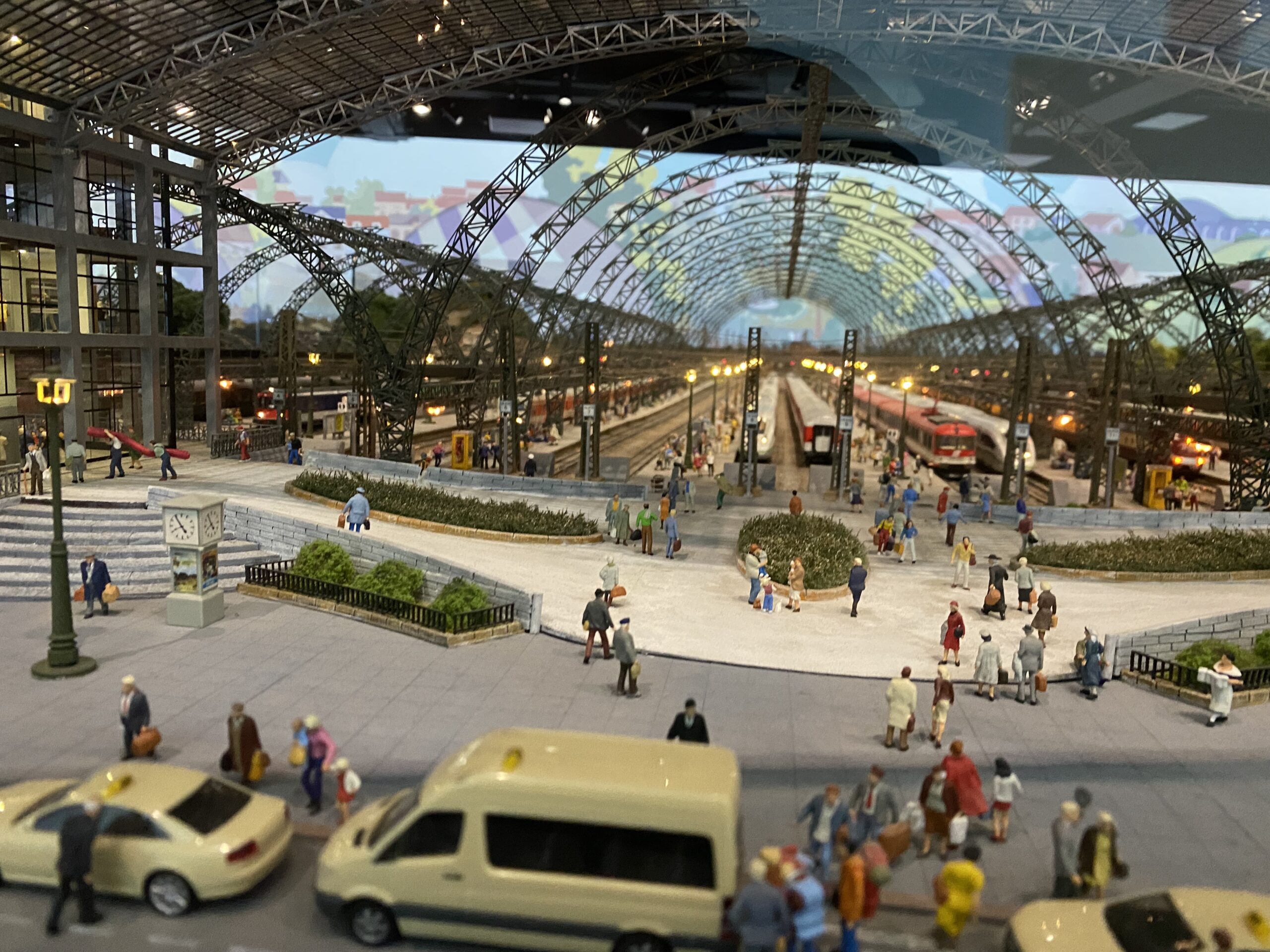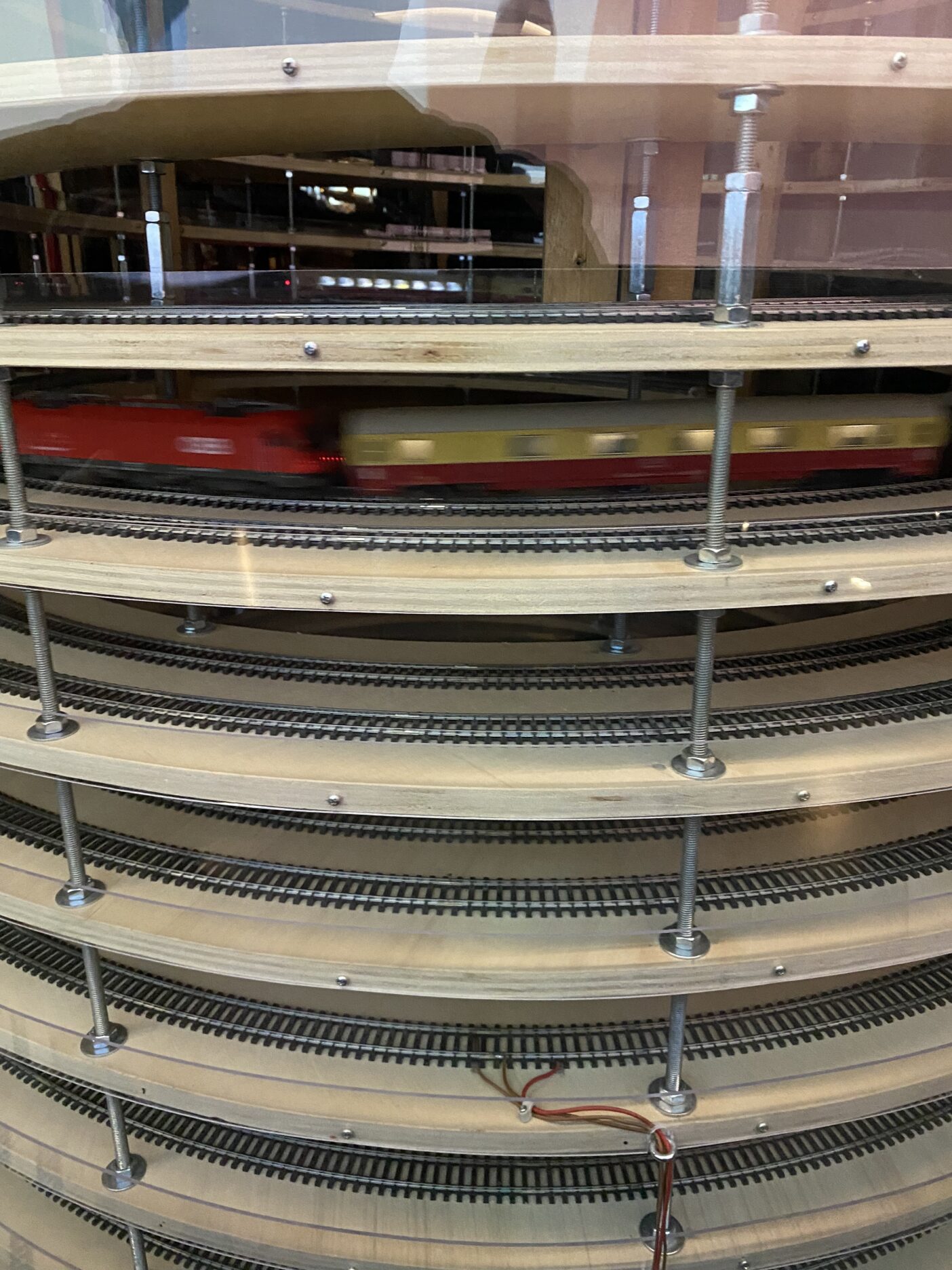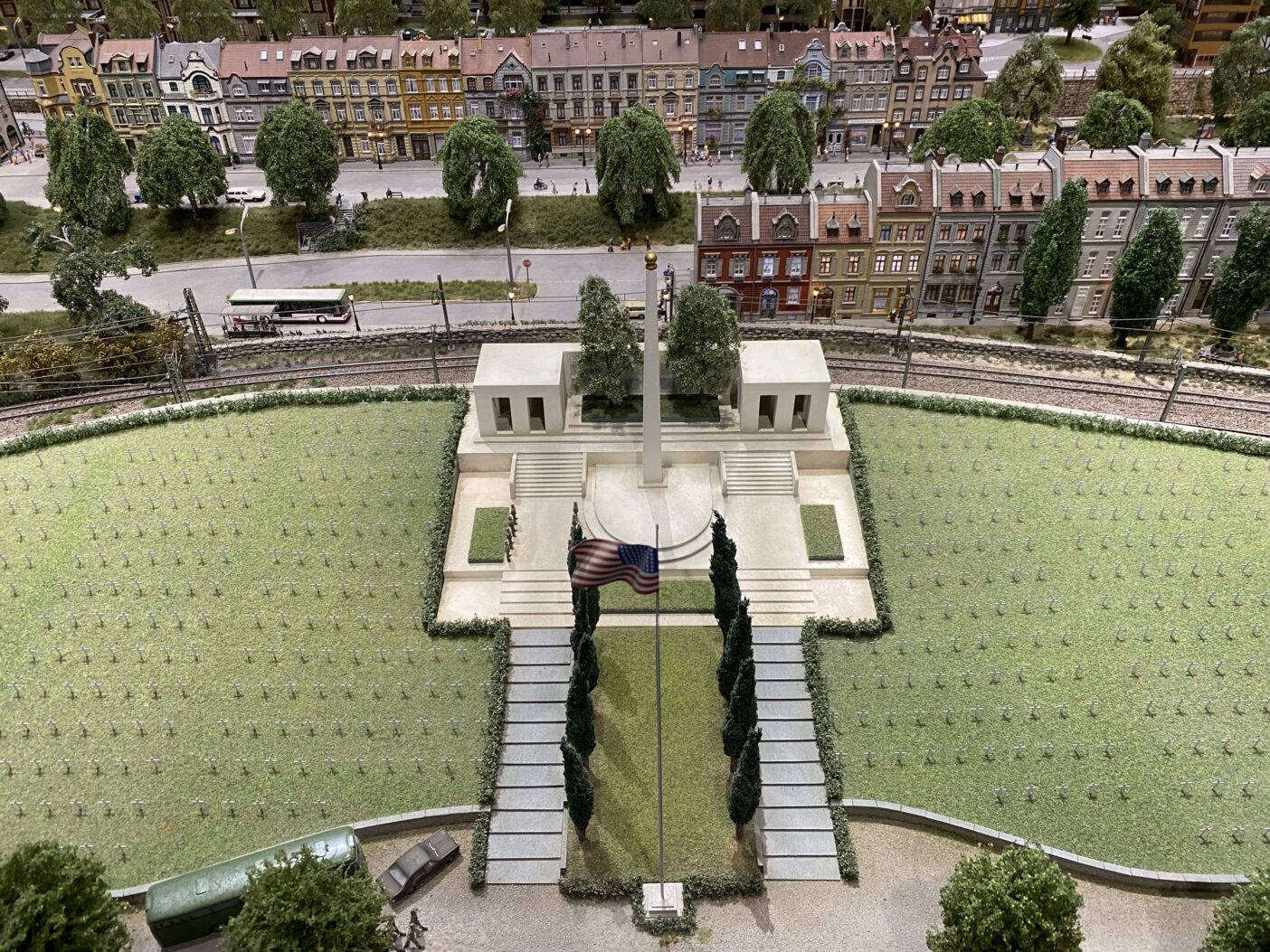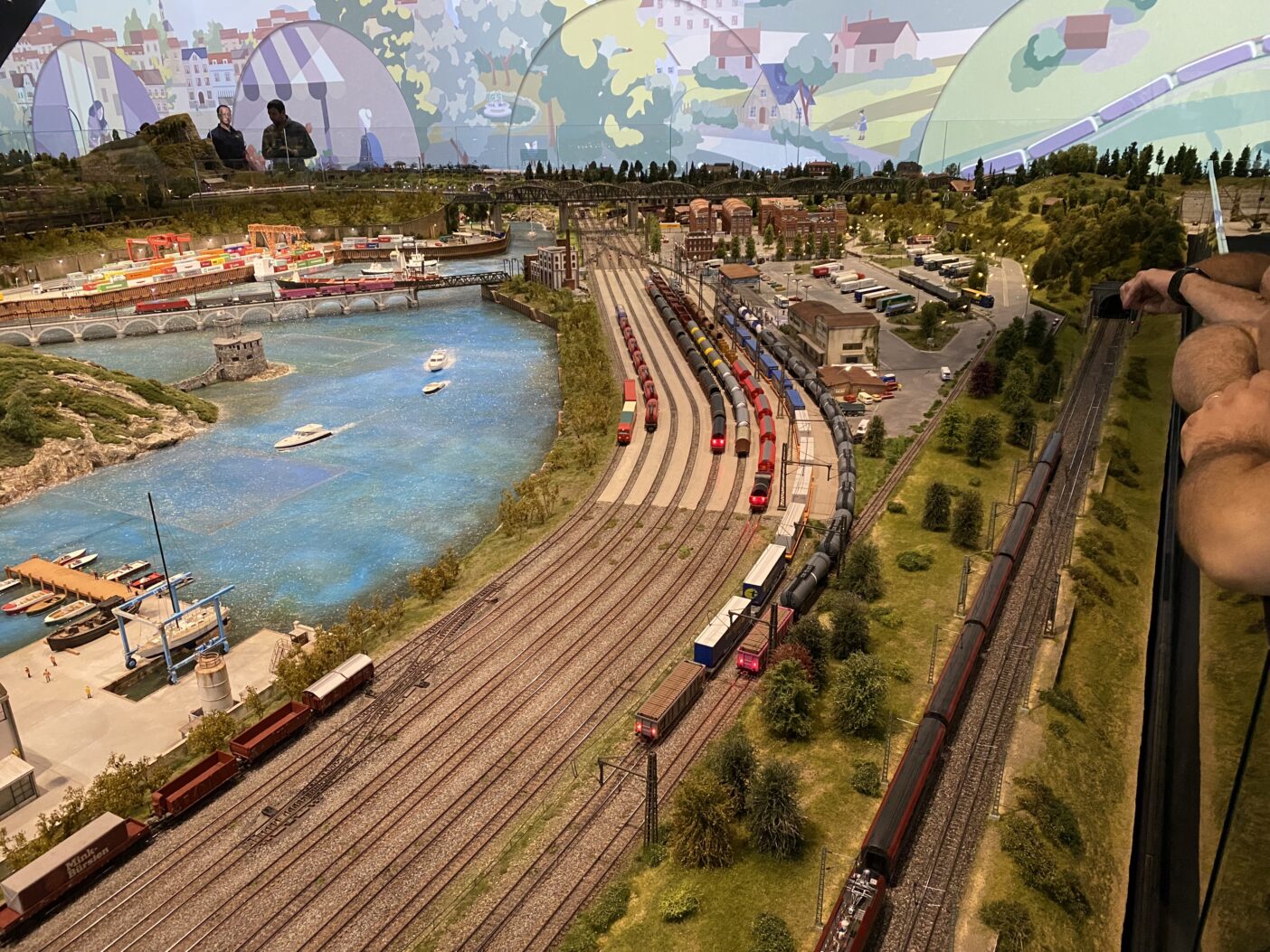A Firenze il nuovo museo Hzero fa sognare i viaggiatori veri e quelli immobili
Il mondo fatato del viaggio ferroviario in miniatura ricreato nello splendido museo Hzero di Firenze. Non è solo modellismo, è creazione paesaggistica.

Il mondo fatato del viaggio ferroviario in miniatura ricreato nello splendido museo Hzero di Firenze. Non è solo modellismo, è creazione paesaggistica.

(English translation below)
È più di un’educazione al viaggio, è anche un’educazione sentimentale, allo sguardo, e a un’idea di bellezza che sfiora un’utopia della perfezione. Il ferromodellismo, i treni in miniatura, hanno rappresentato per molti il primo passo nell’arte del viaggiare. Ma per poco: chi abbia poi cominciato a frequentare lo sferragliare dei veri treni, si è lasciato alle spalle quel mondo colloso di legno e plastica, di idilli paesaggistici senza odore.
Chi vi si è attardato, all’euforia post-circuito completato ha spesso fatto subentrare la noia. Ma qualcuno ne ha fatto un’ossessione artistica. Hzero, il nuovo museo fiorentino dedicato al mitico plastico di San Giuliano e dei suoi adepti (se ne conosceva l’esistenza appartata, in un capannone della periferia), è anche un atto di vocazione a condividere il gioco di una vita.
Gli è piaciuto costruirlo, gli piace giocarci, e gioiscono a far giocare chiunque varchi la soglia dell’ex-cinema Ariston accanto a Santa Maria Novella – a lungo ennesimo contenitore abbandonato di Firenze e, grazie a un investimento privato che ha del filantropico, da poco riconvertito a sede di un plastico ferroviario tra i più grandi al mondo, e probabilmente il più sofisticato di tutti.
La meticolosa attenzione al dettaglio, forma mentis dei ferromodellisti, è stata applicata all’intero progetto del museo Hzero: colonna sonora realizzata niente meno che da Tempo Reale, l’istituto di musica elettronica fondato da Luciano Berio, pareti della grande sala animate da videoproiezioni create appositamente dallo studio milanese di Karmachina; un piano superiore con l’officina del collezionista in cui si assiste alla riparazione di locomotive o dispositivi elettrici, video con interviste d’epoca, qualche vetrina con i modellini più succulenti, spazio per mostre temporanee.
Ma soprattutto, c’è questo immenso circuito, un capolavoro di micro-ingegneria civile ed elettronica, opera di un collettivo di geniali fanatici.
Riporto dalle informazioni biografiche alcuni dati, che hanno dell’eroico: l’87enne signor Mutolo, che per il plastico ha realizzato ponti, viadotti, muraglioni, imbocchi di gallerie, piccoli natanti, le navi da carico e alcuni fabbricati tra cui il Museo e il Castello del Cinquecento.
Tutte le opere edili del museo Hzero sono dedotte da immagini e disegni di opere pre-esistenti poi riprodotte nella scala 1:87. La monumentale diga del plastico è ispirata a quella del Brasimone e si compone di una struttura in legno compensato rivestita in gesso e poi incisa a punteruolo.
Beppe Innocenzi, classe 1947, che durante gli anni ha realizzato prototipi di rocce creando stampi con gomme siliconiche e lattici naturali nelle quali vengono colate miscele di gessi per la realizzazione delle stesse rocce successivamente colorate. Con l’utilizzo delle resine bicomponenti ha inoltre realizzato il mare, i laghi e i fiumi del plastico.
Questi sono solo due tra gli ingegneri, i commercianti, i metalmeccanici, insomma i cittadini appassionati, chiamati a raccolta nel corso degli anni dal capostipite di questa impresa che fu Giuseppe Paternò Castello di San Giuliano, continuata poi dal figlio Diego.
Ci sono voluti quarant’anni, a partire dagli anni Settanta, per sviluppare un iniziale gioco da ragazzo in un progetto faraonico, spostandolo prima nel fienile di campagna e poi in un hangar di Scandicci, e un’altra decina di anni per l’approdo – con un trasloco complicatissimo – nel pieno centro di Firenze.

Il mondo che ci offre è, al massimo grado, quello del viaggio estatico di convogli immacolati che lentamente circolano su decine di binari diversi (tanto per dare un’idea: per cambiare di altezza tra sezioni del plastico, in un angolo la ferrovia gira su se stessa per otto volte), con un’immensa stazione di architettura contemporanea e altre d’epoca, un porto con moli per container, laghi e fiumi, campeggiatori, castelli, gli immancabili pompieri all’opera, un grande cimitero di guerra americano (si apprezza invece l’assenza dei canonici convogli militari), e molto altro, tanto che ci si aspetterebbe, tra la miriade di dettagli e di episodi di vita riprodotti, anche la coppietta appartata o la partita di calcetto nel cortile di scuola.

C’è spazio per tutta l’umanità nei 280 mq di paesaggi ripresi da Berlino, l’isola d’Elba, la Svizzera, l’Ampezzo. Ma è uno spazio edulcorato, utopico appunto, quel mondo lindo e imperturbabile che appartiene al ferromodellismo. Ci piace proprio per questo: la curiosità è acuita dalla cura dei particolari, e il senso globale è quello di una pace serena in cui contempliamo l’archetipo della società umana.
Per il viaggiatore c’è anche la spiegazione dell’avventura ferroviaria: tutti dettagli di questa società sono tenuti insieme dai binari, che mettono in collegamento città e montagna, merci e persone, esattamente come nelle vie ferrate reali.

È la funzione dei treni, sul serio e per finta, declinata e spiegata esattamente quando, dall’alto di uno dei piedistalli del museo, assistiamo quasi storditi alla pluralità di vite e di situazioni quotidiane intrecciate dalla trama dei convogli in movimento – tanto che all’Hzero riecheggia Albert Kimsey Owen:
“La costruzione delle ferrovie è una cura per i problemi sociali e politici della vita moderna. La povertà, la rivoluzione, il brigantaggio, la persecuzione religiosa e i corporativismi sociali scompaiono davanti a questo evento onnipossente. Dove l’esercito e la legge sono impotenti, la locomotiva ha successo.”
Vale anche per il gioco, per il sogno del viaggiare senza spostarsi, per il paesaggio della meraviglia in miniatura.
ENGLISH VERSION
The fairy world of miniature rail travel in the splendid Hzero museum in Florence. Not just modeling, but landscape creation.
It is more than an education to travel, it is also a sentimental education, to the gaze, and to an idea of beauty close to an utopia of perfection. Model railways, or miniature trains, have represented for many of us the first step in the art of travelling. Yet, only for a short time: those who then began to frequent the rattling of real trains, left behind that gluey world of wood and plastic, of landscape idylls without smell. On the other side, those who have lingered model railways, have often replaced with boredom the initial euphoria. Others, however, have made it an artistic obsession. Hzero, the new Florentine museum dedicated to the mythical (its secluded existence was known in a warehouse on the outskirts of the city) model “of San Giuliano” and of his partners, is also an act of vocation to share the pleasure of a lifetime game.
They enjoyed building it, they like to play with it, and they rejoice in letting play anyone who crosses the threshold of the former Ariston movie theatre next to Santa Maria Novella (for a long time another abandoned location in Florence, which, thanks to a private investment private that has something of philanthropic, has been recently converted to the museum of a railway model among the largest in the world, and probably the most sophisticated of all).
The meticulous attention to detail, the mindset of the model railroaders, was applied to the entire project: the soundtrack is created by Tempo Reale, the electronic music institute founded by Luciano Berio, the walls of the great hall are animated by video projections created specifically by Karmachina’s Milanese studio; the upper floor includes a workshop where you can witness the repair of locomotives or electrical devices, videos with vintage films, some showcases with special models, and also a space for temporary exhibitions.
Above all, there is this immense circuit, a masterpiece of civil and electronic micro-engineering, the work of a groups of brilliant fanatics. I report from the biographical information some data, which sound somehow heroic: the 87-year-old Mr. Mutolo, who for the model “created bridges, viaducts, walls, tunnel entrances, small boats, cargo ships and some buildings including the Museum and the Castle of the sixteenth century. All the building works are deduced from images and drawings of pre-existing works then reproduced in the 1:87 scale. The monumental dam of the model is inspired by that of Brasimone and consists of a plywood structure covered in plaster and then engraved with an awl. ” O Beppe Innocenzi, born in 1947, who “Over the years he has made prototypes of rocks by creating molds with silicone rubber and natural latexes in which mixtures of gypsum are poured for the realization of the same rocks which are subsequently colored. With the use of two-component resins he also created the sea, lakes and rivers of the model. “
These are just two of the engineers, traders, factory workers, all passionate citizens, called together over the years by the founder of this enterprise, Giuseppe di San Giuliano and then continued by his son Diego.
It took forty years, starting from the Seventies, to develop an initial boy’s game in a gigantic project, moving it first to a private country barn and then to a hangar in Scandicci, and another ten years for the landing – with a very complicated movine – in the heart of Florence.
The world it offers us is, to the maximum degree, that of the ecstatic journey of immaculate convoys that slowly circulate on dozens of different tracks (just to give an idea: to change height between sections of the model, in a corner the railway turns on itself eight times), with an immense station of contemporary and other period architectures, a port with container docks, lakes and rivers, campers, castles, the inevitable firefighters at work, a large American war cemetery (the absence of canonical military convoys is appreciated instead), and much more.
So much more, that one would expect, among the myriad of details and “episodes” of life reproduced, even the secluded couple or the soccer match in the school yard. There is space for the all of humanity in the 280 square meters of landscapes inspired by Berlin, the Elba island, Switzerland, the Ampezzo mountain. It is a sweet space, an utopian, clean and imperturbable world. We like it precisely for this: curiosity is matched with the attention to detail, and the overall sense is that of a serene peace in which we contemplate the archetype of human society.
For the traveler there is also the explanation of the very railway adventure: all the details of this landscape are held together by the tracks, which connect city and mountains, goods and people, just like it happens with the real railway.
Seeing it from one of the various Hzero pedestals, the miniature circuit declines and explains exactly the function of trains, both the real and the toy ones, declined and explained exactly when, from the top of one of the museum’s pedestals, we witness almost stunned the plurality of lives and everyday situations intertwined by the plot of moving trains.
Eventually, the Hzero museum echoes Albert Kimsey Owen: “Building railways is a cure for the social and political problems of modern life. Poverty, revolution, banditry, religious persecution and social corporatism disappear in the face of this omnipotent event. Where the army and the law are powerless, the locomotive is successful”.
This is also valid for the game, for the dream of traveling without moving, for the landscape of marvel in miniature.
